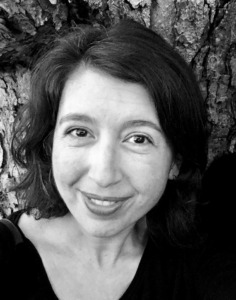What IS an Essay?
 By Randon Billings Noble
By Randon Billings Noble
What is an essay? A basic five-paragraph argument? A long and rambling meditation? A deep dive into academic research? A funny or embarrassing personal anecdote?
Yes … but also no. An essay can be so much more than we might first think.
Montaigne is known as the father of the essay. Reading him now can feel like heavy sledding. His 16th-century prose is ornate and demands a level of attention our 21st-century minds aren’t used to, but what he was writing was revolutionary. After retiring from politics, he decided to write about himself, his thoughts, his experiences, his realizations. Before this, most first-person writing was confessional in the religious sense. But Montaigne wrote about more earthly concerns, like friendship, sadness, idleness, letter-writing, sleep, death, clothes. He used his own experiences to discover intellectual insights. He created – or at least radically shaped – a new form of writing.
When pressed for a brass-tacks definition of an essay, I use one I learned in graduate school: an essay is a piece of writing with a beginning, middle, and end that develops an idea in an interesting way. Note that an essay doesn’t require an introduction, body, and conclusion; it doesn’t have to end so neatly. Nor does it a require a thesis; essays can do more than argue or prove. An essay can question, wonder, warn, dismantle, challenge, gesture to, forecast, probe, propose, or explore.
Annie Dillard writes that the “essay is, and has been, all over the map. There’s nothing you cannot do with it; no subject matter is forbidden, no structure is proscribed. You get to make up your own structure every time, a structure that arises from the materials and best contains them.”
Look at Adam Gopnik’s somewhat traditional essay “Bumping into Mr. Ravioli,” which starts with a story about his daughter’s imaginary friend but then expands to do some serious thinking about the ways our tech-filled urban lives keep us too busy for real connection. Or look at Sarah Einstein’s segmented essay “A Young Man Tells Me,” which uses a list to comment on contemporary masculinity without ever making an overt (or thesis-y) claim about it. Or look at Christine Byl’s flash essay “Bear Fragments,” which is exactly what it sounds like: seven short fragments about bears. What do they add up to? That’s up to the reader to decide.
The core of an essay is an idea, something that the writer thinks, something they want to say. But the way to say it is nearly boundless. Each essay’s structure is unique to the ideas within. Funny, thoughtful, subtle, sharp, meditative, pointed, meandering – there’s much more to the essay than five paragraphs.
Randon Billings Noble is an essayist. Her collection Be with Me Always was published by the University of Nebraska Press in 2019 and her anthology of lyric essays, A Harp in the Stars, was published by Nebraska in 2021. Other work has appeared in the Modern Love column of The New York Times, The Rumpus, Brevity, and Creative Nonfiction. Currently she is the founding editor of the online literary magazine After the Art and teaches in West Virginia Wesleyan’s Low-Residency MFA Program and Goucher’s MFA in Nonfiction Program. You can read more at her website, randonbillingsnoble.com.
Learn to Write Segmented Essays with Randon. Randon Billings Noble leads “Segmented Essays: When the Whole is Greater than the Sum of Its Parts” for Charlotte Lit via Zoom, Tuesday, December 5, 2023, 6:00-8:00 p.m. Info and registration
